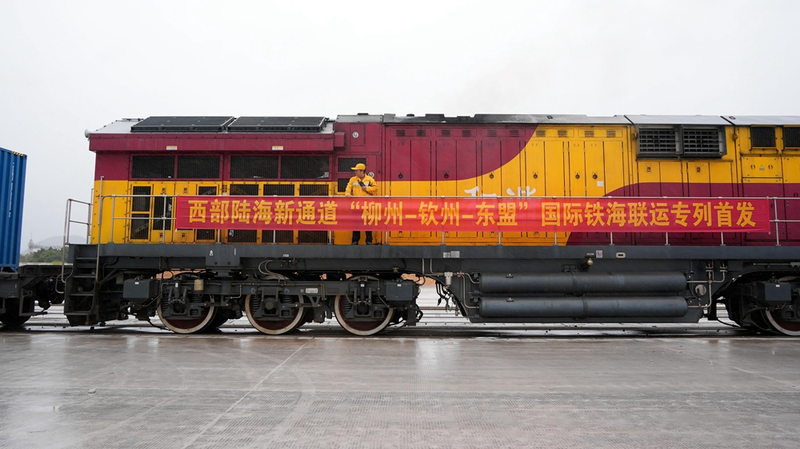A brand-new logistics corridor linking the Chinese mainland’s Liuzhou and Qinzhou ports with ASEAN has officially launched, offering a faster, greener, and more cost-effective route for goods.
On Monday morning, the inaugural Liuzhou–Qinzhou–ASEAN rail-sea intermodal train rolled out of Liuzhou railway port in Liuzhou City, in the Chinese mainland’s Guangxi Zhuang Autonomous Region. Packed with 56 standard containers of automotive parts, the train will transfer onto a ship at Qinzhou port before setting sail for Malaysia.
This milestone marks the first regular service on the New Western Land-Sea Corridor. By integrating Liuzhou railway port into the Beibu Gulf Port’s inland port system, the new route extends the reach of rail-sea intermodal trains, connecting inland factories directly to overseas markets.
China Railway Nanning Group is fine-tuning schedules to harness rail transport’s high capacity, low cost, and all-weather advantages. From January to October this year, the Liuzhou–Qinzhou rail-sea service moved over 8,400 containers of automotive parts—evidence of growing demand and operational success.
Liuzhou is a powerhouse of automotive manufacturing on the Chinese mainland, known for its strong industrial base and export hub status. The new corridor is expected to slash logistics costs, speed delivery times, and open fresh opportunities in ASEAN markets for vehicles and components made in Liuzhou.
For young entrepreneurs, digital nomads, and business leaders across the G20, this corridor illustrates how infrastructure innovation can drive sustainable trade and economic integration. As global supply chains evolve, the China-ASEAN corridor sets a new standard for efficiency and cross-border collaboration.
Reference(s):
cgtn.com




